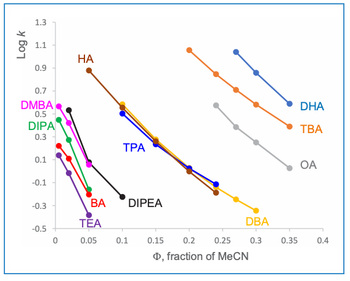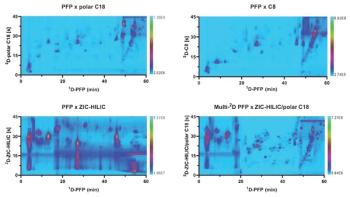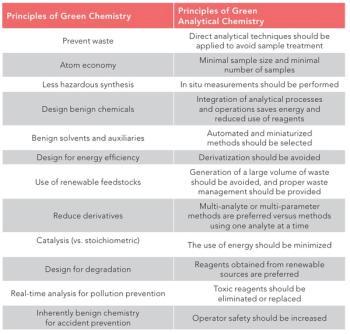Key Points
- A new GC-based method enables accurate weight percentage analysis of LIB electrolytes without external or internal calibration.
- The method uses a Polyarc reactor to convert all compounds to methane, making FID detection molecule-independent.
- This approach reduces analysis time and improves accuracy, benefiting semi-routine and non-routine labs.
- Results showed high correlation with manufacturer specifications and excellent reproducibility with <1% RSD.
To determine the composition of organic carbonates in lithium ion batteries (LIBs), techniques such asgas chromatography–flame ionization detection (GC–FID), GC–mass spectrometry (GC–MS), liquid chromatography–mass spectrometry (LC–MS), or nuclear magnetic resonance (NMR) are commonly used. However, aside from NMR, these methods provide molecule-dependent responses, meaning external calibration with standards for each expected compound is required to quantify composition accurately. This article presents a GC-based method to determine the weight percentages from a single measurement without the need for the external or internal calibration.
The production of electrolytes for lithium ion batteries (LIBs) occurs at different locations around the world. For quality assurance, it is essential to determine the precise composition of organic carbonates. Variations in their composition can significantly affect battery performance and safety. Accurate analysis ensures that manufacturers can maintain consistent quality and meet the stringent requirements of the industry, leading to more reliable and efficient energy storage solutions.
The producers of LIBs typically provide the weight percentages (%w) as the given composition. To determine this composition, different analytical technologies can be used, typically gas chromatography–flame ionization detection (GC–FID), GC–mass spectrometry (GC–MS), liquid chromatography–mass spectrometry (LC–MS), or nuclear magnetic resonance (NMR). All of these technologies (except for NMR) have one thing in common: they all provide molecule-dependent responses. In other words, to determine the %w, an external calibration with all expected compound standards would need to be performed.
This is a common practice and typically does not pose a problem in routine operations. Nevertheless, for semi-routine and non-routine laboratories this leads to a significant time investment. In this article, we present a GC-based method to determine the weight percentages from a single measurement without the need for external or internal calibrations.
Method
The method used the Polyarc system (Shimadzu), which has a catalytic microreactor that converts all organic compounds to methane molecules before their detection by the FID (Shimadzu). This approach converts the FID into a quantitative carbon detector (QCD). An additional advantage of this approach is that by eliminating calibrations, the accuracy of quantification is significantly enhanced.
Sample Preparation and Measurement
A 25-µL measure of a LIB electrolyte with 1M LiPF6 was diluted with 1-mL dichloromethane and centrifuged for 5 min at 8500 rpm. The centrifuged solution was transferred into a 2-mL GC glass vial and measured using the Nexis GC-2030 system (Shimadzu) with Polyarc reactor.
The following analytical hardware and software configuration was used: main unit: Nexis GC-2030 gas chromatograph (Shimadzu); accessory: AOC 30i liquid sample; main consumables: SH-I-5MS, 30 m × 0.25 mm, 0.25-μm; P/N 221-75940-30; Software: LabSolutions LCGC (all Shimadzu).
Results and Discussion
The results of two different measured electrolytes are shown in Figure 1.
The two measured electrolytes are slightly different in composition of main carbonated and additives. Both are common products frequently used in the manufacturing of LIBs. A manufacturer’s specification of the %w is available for both. The original specifications may slightly differ from the actual quantification. The reason for that is the native decomposition and rearrangement of carbonates that has already occurred during storage. As long as decomposition occurs only on a small scale, it does not have any impact on the quality of the electrolytes.
As all substances are converted to methane before the FID, providing a molecule-independent response, the calculation of %w using this approach was straightforward. Basically, the software integrates the related compounds (main compounds and additives) and calculates the % of areas out of that. The obtained % of areas are the needed %w of all integrated compounds.
This technology does not require an accurate and precise sample preparation—the main target is just not to overload the reactor and the FID. The decomposition/purity grade can also be calculated. In that case, the sum of the peak areas of the target components is compared to the sum of the peak areas of the unknown components in a percentage relationship. These two % areas are then the %w between the targeted compounds and destruction products (or impurities) in the electrolyte.
The calculated %w of the investigated electrolytes in comparison to the original specifications are shown in Table 1. The electrolytes were measured three times to calculate the percentage relative standard deviation (%RSD). The results shown in Table 1 demonstrate a very high RSD accuracy in the weight percentage calculations, with all components being <1%. The correlation between the calculated weight percentages and those provided by the manufacturers also shows a good agreement. Minor differences arise, as mentioned earlier, due to prior storage, transportation, and sample preparation. Overall, Table 1 clearly indicates that a reliable correlation between the measured values and the specifications is possible, thus ensuring a dependable quality assurance analysis.
Conclusion
This article has demonstrated the suitability of a GC–MS system equipped with a reactor enhancement for addressing common quality assurance requirements in LIB electrolyte analysis. The method allows for high-accuracy results to be obtained in a single measurement without additional time requirements. The reactor enhancement serves as a valuable complement to traditional GC–MS analysis in this field, where mass spectrometry is used for confirmation and identification, and the enhanced flame ionization detection supports reliable compositional analysis.
About the Author





